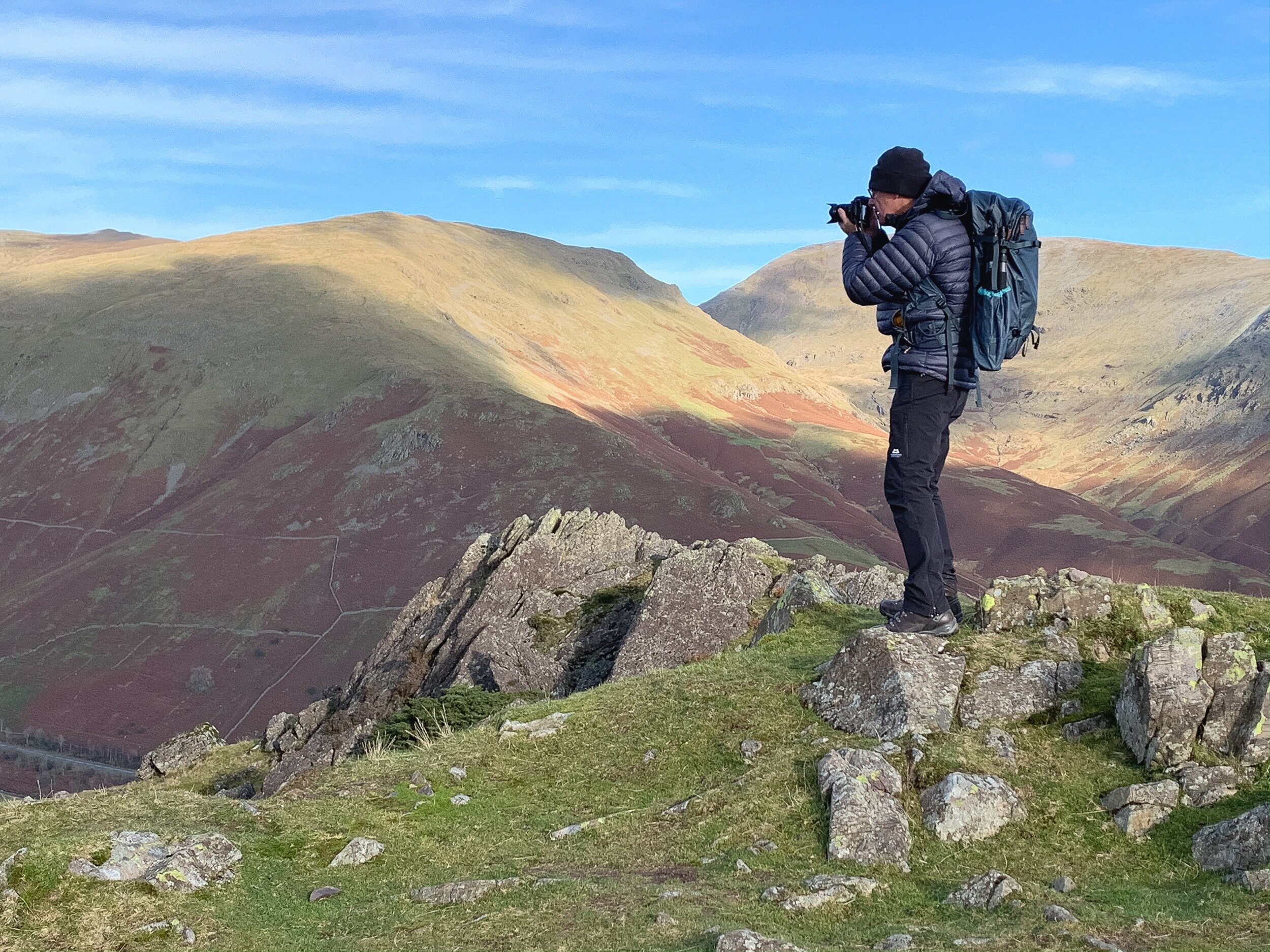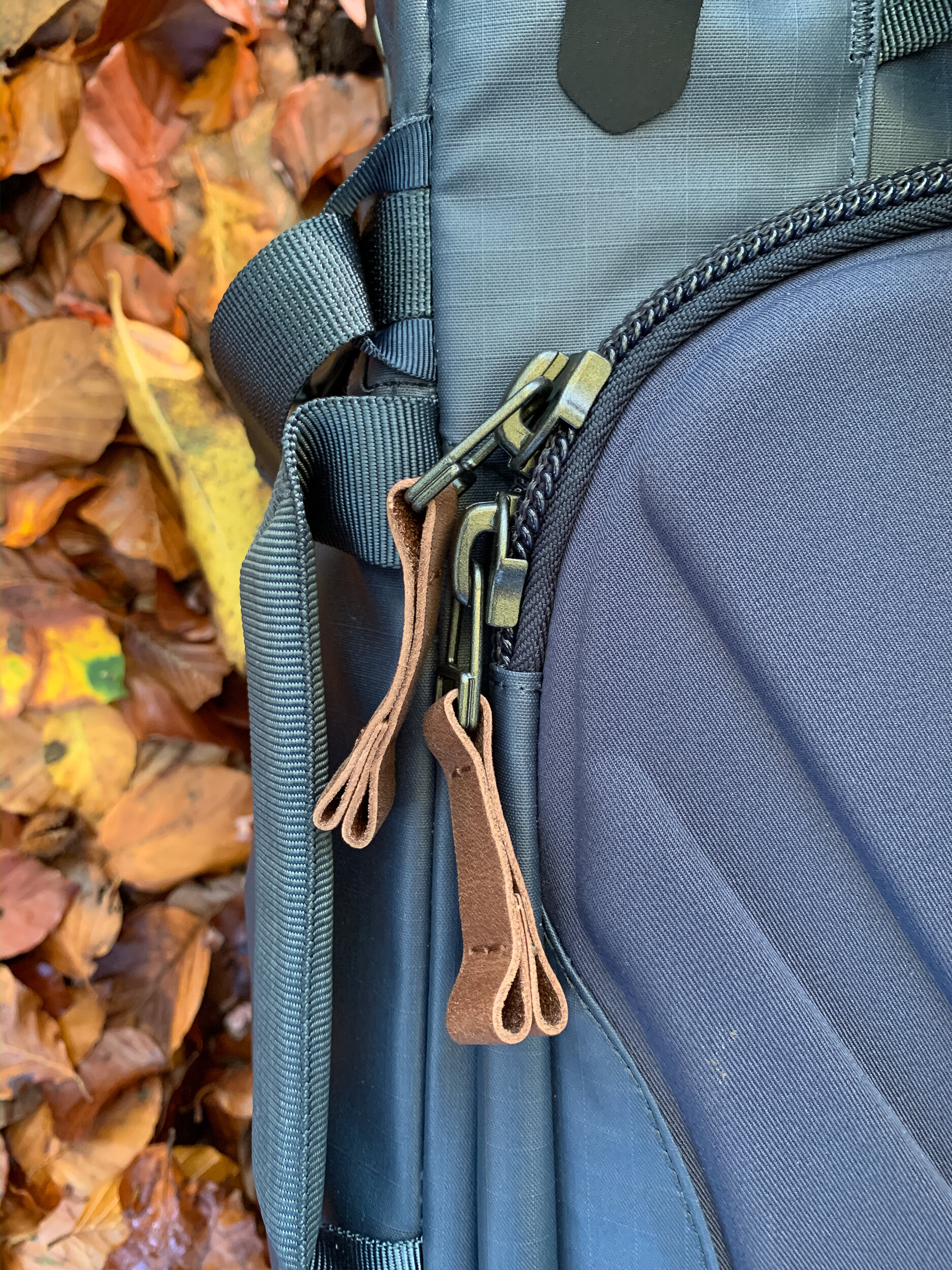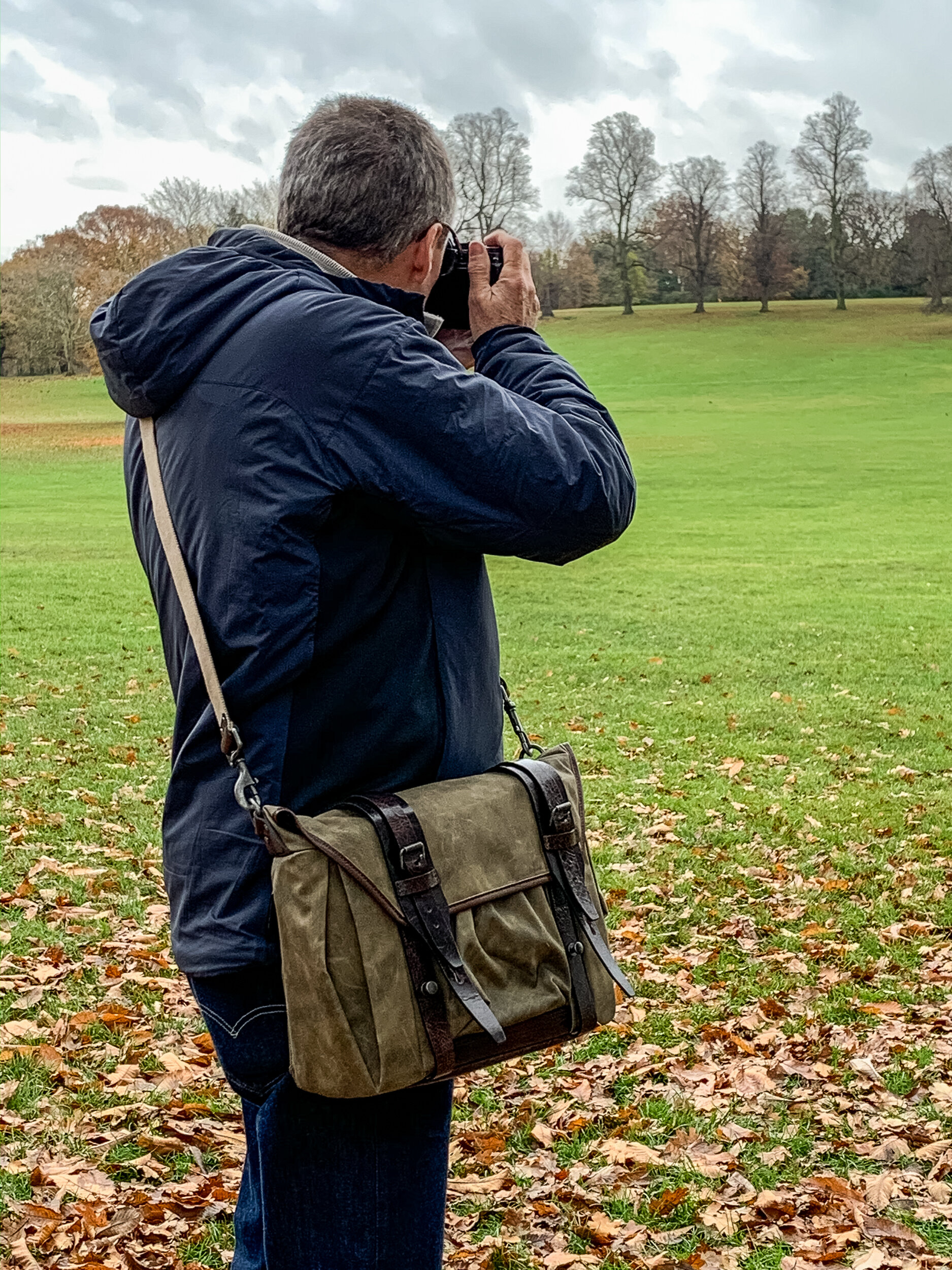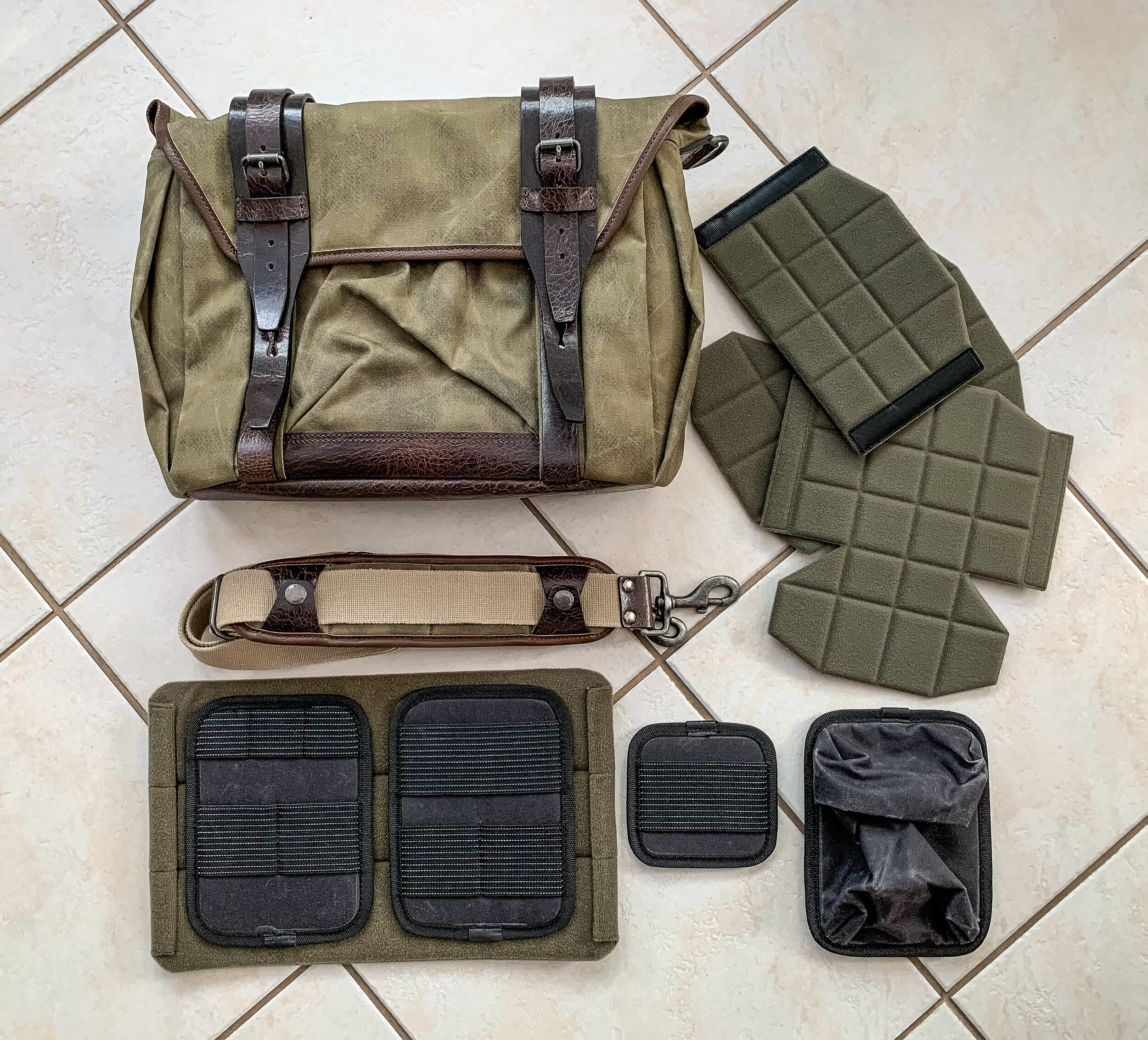The search for the perfect camera bag is, it seems, never ending and many of us switch from one brand to another in the quest to satisfy our individual needs. However, that is precisely the nub of the issue because the first point to consider when selecting a bag is what specifically do you want it for. Be clear on this and don’t be tempted to compromise and you’re half way there.
As a Travel & Landscape photographer I typically select from two types of bags, shoulder bags and backpacks. The shoulder bag is perfect when I want to take limited gear and have it easily accessible. However, for more considered landscape shooting, especially when walking distances, a backpack is the only way to go. But even that choice is not straightforward because a gentle stroll from the car on a decent day is one thing but a longer walk into the hills, or when conditions are changeable or less than perfect, requires a different approach. For landscapers, there are some excellent backpacks that are extremely good at carrying camera gear, however when wanting to include essential extras such as waterproofs, warm jacket, food and drink many of these bags are found wanting.
What was I looking for?
My quest therefore was to find a quality bag that would hit all the functional buttons, carry my camera gear but also have enough space for those vital extras. Although many bags will claim to have space for non-photographic items, in truth that space is usually very limited.
So this was my criteria :
· Carry the gear (photo & non-photo)
· Comfortable to carry long distances over varied terrain.
· Quality materials and construction
· Weatherproof
· Easy access
· Ability to carry my tripod
· Ability to carry a 13” macbook
Who are Shimoda?
After much research my attention was grabbed by the Explore bag from a company called Shimoda Designs, distributed in the UK by the MAC Group who also sell the Benro range of products.
Shimoda Designs is an adventure camera bag company founded by Ian Millar, a lifelong explorer, snowboarder and product designer known for developing some of the most innovative camera bags in the world - Ian was previously chief designer for Fstop bags. Shimoda is a fairly new venture which draws on Ian’s experiences and utilizes the most advanced materials and technologies available to satisfy the needs of outdoor adventure photographers.
The Shimoda Explore Range
The Explore range comprises three sizes of pack, 30, 40 and 60 litre, which are designed to carry photography gear in a modular camera unit system but critically also have sufficient additional space to carry those essential non photographic items. So, there is a modular, customisable bag to suit your needs whether that be for a one, two or several day adventure. All three sizes of pack are available in two colours, Blue Nights and Sea Pine, a green colour.
I contacted the MAC Group asking if I could test and review the bag. I went down to meet with the team and they agreed to my request. I have not received any money for this review, my comments are my own and have not been influenced by the company in any way.
I chose to test the 40 litre Explore as it was only marginally bigger than the 30 litre and I wanted to ensure it would hold enough of my “other gear” and therefore be different to other bags I have owned.
How did I find it?
I have used this bag for around six weeks in the Lake District, Peak District and closer to home. It’s been subjected to pouring rain, high winds and freezing conditions all of which it has taken in its stride, performing superbly.
The first thing that struck me was the quality and robust feel of the bag. The nylon shell is resin coated making it extremely weather resistant and easy to wipe clean. The heavy duty YKK zips are waterproof with rather nice leather zip pulls which move freely and can be operated one handed with gloves. In addition to the straps there are two grab handles positioned at the top and side of the bag for easy handling especially when using overhead lockers or luggage shelves.
The Shimoda Explore bags are designed to open from the back (and the side when using certain camera units), aiding security and keeping your back clean. However, this design is different to most others as the flap unzips to the side (like a book) rather than being “hinged” at the bottom. The inside of this flap also features a pouch to store your laptop, a 13” in the case of the 40 litre. The bag is a modular design with camera equipment stored in units of varying sizes (purchased separately) according to your needs. This is a very good system and I particularly liked the fact that the Shimoda units offer very good protection without being over padded and bulky. Each unit comes in a zipped nylon cover which can be carried separately. I chose the Medium Mirrorless Unit which was perfect for my Fujifilm equipment but you can choose larger units or combine a Medium with a smaller unit for example to add a drone. I really like this flexibility and of course the less camera space you need means more space for other items such as jackets, waterproofs, food etc.
The bag itself has 3 main compartments and one side pouch – more of that in a moment. The main section is where the camera unit is placed, the space above used for other personal items. At the front, there is a large pouch that runs the length of the bag and is great for waterproofs which are kept away from the main compartment containing camera gear. The inclusion of drain holes at the base of the pocket is an example of the thought that has gone into the design. This pouch also contains a elasticated sleeve for separating items or for placing a water bladder – there is also a routing system through the bag for a hose. On the top of the bag is a smaller lid pouch which is lined with soft fabric, ideal for anything you need to protect or grab quickly such as glasses or goggles, a head torch, hat, gloves, snacks etc and within this pouch there are two small zipped pockets great for keeping keys, business cards or credit cards safe.
The sides of the bag are designed for two purposes. One side features a zip opening which allows easy access when using the small camera units. The other side has a zipped pocket which opens to reveal a large pouch into which your tripod is placed, head down, and then secured with side straps. This is a neat way of carrying your tripod and the pouch is large enough to take the biggest pro ball heads. Of course, if you wish this pouch can be used for other purposes too and the pouch pocket is removable when it can then be attached to the shoulder strap to hold the camera and lens so it’s immediately available when required. I never did this but I guess it’s a useful option to have.
Once we’ve filled our bag one of the most important considerations is comfort when carrying a fairly heavy load. I can honestly say that this bag is the most comfortable I have ever used. Although the wide, shaped, straps are not too thickly padded they are very comfortable and the bag can be tailored to individual’s torso with an adjustable harness with four height options. This adjustable harness with its bear hug-like fit makes sure the pack’s weight doesn’t put pressure on your shoulders and is instead distributed to your hips and front torso. Additionally, the rear panel lets air flow between your back and the pack to reduce discomfort from sweating. The shoulder and waist straps feature little pockets and stuff pouches for holding essentials such as a small phone, snacks etc. I should also point out that Shimoda offer specific straps tailored to fit the female form providing even more comfort.
Although the bag is weather resistant Shimoda also offer a waterproof rain cover for ultimate protection. The cover is also well designed with holes to fit the waist strap through securing it and ensuring a perfect fit to keep the rain out.
Although the camera units effectively store your main camera gear there are lots of bits of equipment that we carry that need storing efficiently. Shimoda offer a range of pouches in different sizes to do just this. Again, they are excellent quality and the clam shell design with see through window and internal zipped pockets work really well.
All sweetness & light?
Whilst overall I am really impressed with the bag there are a few little niggles or changes I would like to see.
Although the Shimoda Explore 40L complies with most airline carry on size regulations the pack is 57cm tall which means that it is 2cm taller than the Ryanair carry on limit. Now, whilst I’m sure in most cases you would get away with this you need to bear in mind that you may encounter an overzealous attendant and be asked to check this into the hold. I guess the good news is that in these circumstances you can simply remove your camera ICU and carry that onto the plane without leaving your expensive gear to the whims of the baggage handlers! Of course, you could buy the 30L pack but that means that you wouldn’t have as much space for non-photographic items, I guess it’s a choice.
The concept of the bag is easy access even whilst wearing and though this can be achieved using the small camera units allowing side access, it’s not easy to open the back panel by releasing the shoulder straps, spinning around on your waist and unzipping which is very useful when on the beach. Since the flap opens to the left rather than at the bottom this means that the zip needs to run right round the base of the pack which it simply didn’t do whilst wearing it, my clothing got in the way. Other packs I have used, that were “hinged” at the bottom, were much better for this.
For my use, rather than have the side access option I would have much preferred to have had an elasticated external pouch here to hold a water bottle. You could use the pouch on the other side of the bag although that presumes you’re not already using that to carry your tripod plus the pouch is not really designed for this due to its size.
Yes, that pouch is pretty big! I understand that it has probably been designed to carry the largest tripods but I’m using a 3 series Gitzo Systematic with an Arca Swiss PO Head, not the smallest combination, but the pouch is really too big for this set up. I guess it’s a difficult call and it’s obviously better to be too big than too small.
I like the idea of having little pockets and pouches on the shoulder and waist straps though in practice these are pretty small and will not accommodate the latest larger size mobile phones. My iPhone XR just about fits into the elasticated pouch on one of the front straps. So, nice idea Shimoda but I’m not sure how practical they really are.
My Gear
Ultimately my gear will flex from trip to trip, I guess that’s not a problem when you buy into a modular design system. However, in most situations I would carry the following, most of which fits easily into the Medium Mirrorless Unit:
· Fuji XT3 body
· XF10-24 f4
· XF16-55 f2.8
· XF50-140 f2.8
· 1.4x TC
· Filters
· Batteries
· SD Cards
· Cleaning cloth, lens wipes
· Head Torch
· Cable release
· Multi Tool
As for non-photographic items I would typically carry a jacket or spare top, perhaps waterproofs, hat, gloves, small first aid kit, emergency blanket, food, snacks and some water. All of this fits into the Explore 40.
The Price
Good things are never cheap but there’s a difference between expensive and value for money and the Shimoda scores highly here and is not out of line with its competitive set.
The current prices for the combination I have are as follows:
· Explore 40 bag £250
· Medium Mirrorless Unit £80
· Rain Cover £8
· Medium Pouch £30
Note: Core Units must be purchased separately OR in one of the Explore Kits.
Verdict
Overall, this is a superb bag. When I look back at my specific needs the Shimoda Explore fits most of them perfectly. The quality and construction is excellent, the bag is supremely comfortable and critically it carries both my camera gear in a flexible way, with easy access, plus my non-photographic items. It will cope with most weather conditions really well and is designed as a true adventure pack. For a pack this size its weight of 1.3kg is also pretty impressive. True, it’s not the cheapest bag out there but you get what you pay for and if you want a top-quality bag that performs superbly and will last for years, you need look no further. It was a joy to use and is Highly Recommended.
Dimensions (external)
Width 29cm
Height 57cm
Depth 26cm
Weight 1.3kg
Price & Availability
Prices as above, All Shimoda products come with a 5-year warranty. Here is a link to the Shimoda website for more information.
In the UK Dale Photographic, in Leeds, stock the range of Shimoda products and offer excellent advice should you require it.























































